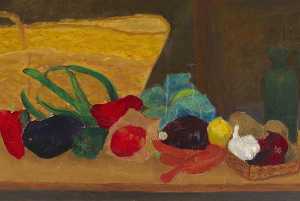Elsbeth Juda
Elsbeth Juda
- umelec
- Všetky umelecké diela v chronologickom poradí
- Všetky artworks podľa abecedy
- Odporúčané umelecké diela
narodený: 1911
smrť: 2014
životopis:
Elsbeth Ruth Juda, née Goldstein and known professionally as Jay and Julius Joel Goldstein (1873–1929), a philosopher. As a young woman, she moved to Paris, where she found work as secretary to a banker. In 1931, Elsbeth married her childhood love, Hans Peter Juda (1904–1975), and they went to live in Berlin where he was a financial editor at the Berliner Tageblatt. In 1933, they fled Nazi Germany for London with nothing but two suitcases and a violin.
Juda studied photography under the Bauhaus photographer Lucia Moholy, the wife of the artist László Moholy-Nagy. At the time Juda and her husband Hans lived in London, where Hans was the publisher of a British trade magazine called The Ambassador, for which László Moholy-Nagy was the Art Director. Lucia Moholy would visit Juda at her home to teach her photography. Soon after, Juda did a stint as a "dark room boy" at the Scaioni Studio in London. She later worked as a photographer for advertising companies and fashion magazines, including Harper's Bazaar .
Hans and Elsbeth Juda originally opened a London satellite office for the Dutch trade magazine International Textiles. After 1940, however, when Amsterdam came under control of the Germany army, the magazine proved too difficult to continue. In March 1946 the Judas changed the name of the publication to The Ambassador and changed its focus to British industry, trade and exports. The magazine was influential from its inception and encouraged by the British Government, who helped by ensuring a continual supply of paper during the war. Indeed, The Ambassador, The British Export Magazine became the voice of British manufacturing for export when the nation's trade was struggling to emerge after 1945. It was published monthly in four languages (English, German, French and Portuguese), had subscribers in over ninety countries, and a circulation of 23,000 copies.
Juda's husband, Hans, coined the official motto "Export or Die" for The Ambassador. Later, as the magazine became an essential marketing and press journal for a Britain desperate to reestablish itself as a global exporter in the post-war era, the phrase would become a mantra for the national manufacturing industry. Throughout their work during the 1940s, 1950s and 1960s, Juda and her husband became two of the United Kingdom's greatest champions for export, constantly promoting every facet of British manufacturing, culture and the arts and, in the process, coming into close contact with a host of distinguished artists, writers, designers and photographers. The critic Robert Melville described Ambassador as "the most daring and enterprising trade journal ever conceived...no other magazine...has so consistently and brilliantly demonstrated the relevance of works of art to the problems of industrial design."
Juda's shoots for The Ambassador combined elements of fashion, modernism and trade. Her series of photos of the famed British model Barbara Goalen modeling Scottish textiles among the heavy machinery of working textile factory are especially representative of her unique visual aesthetics. Together they built a considerable art collection from the many artists that they came in contact with at The Ambassador. It is a much wider circle of friends, however, which would allow Jay to capture every facet of a reemerging post-war Britain through the lens of her camera. The magazine was bought by Thomson Publications in 1961 and continued to be published until 1972.
In 2009 the gallery L’Equipement des Arts held a long overdue and immensely successful exhibition of Elsbeth Juda's Photographs from 1940 to 1965.L’Equipement des Arts coordinated an extensive research and academic project to find and retrieve materiel from The Ambassador Archive at the V&A Museum to make the exhibition possible. This culminated with negatives being loaned by the V&A Museum and National Portrait Gallery to produce 140 historic prints, many of which had never been seen or shown before.
These include a unique record of Graham Sutherland's ill-fated portrait of Sir Winston Churchill commissioned by the House of Commons to celebrate his 80th birthday. The exhibition also showed for the first time, a series of photographs which illustrate Elsbeth Juda's unprecedented access to Henry Moore and his studio as he worked on the sculpture King and Queen.
The exhibition featured dramatic photographs of a model draped in only fabric and photographed on the roof of Lancashire mill to promote the British textile industry. Other images include Joe Tilson, William Scott, Lynn Chadwick, Osbert Lancaster and Peter Blake are among many leading artists of the day photographed by Elsbeth. So were the era's leading models including Barbara Goalen, Fiona Campbell-Walter, Lisa Fonssagrives-Penn, Shelagh Wilson and Marla Scarafia.
More...
Wikipedia link: Click Here




